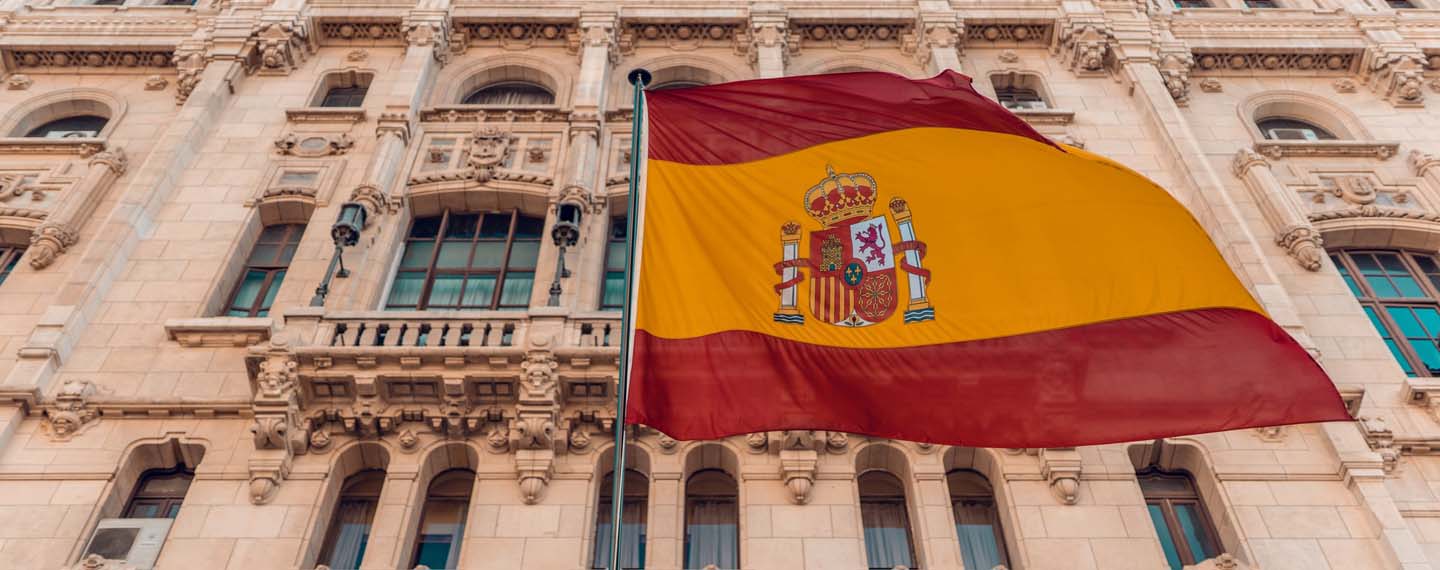Spain is one of four countries, along with Bosnia and Herzegovina, San Marino and Kosovo, whose national anthem is wordless, Giles Tremlett points out in the introduction to his beautifully illustrated Brief History of Spain (Head of Zeus) published recently.
This anomaly came to international attention at the opening of the 2010 World Cup final in South Africa between Spain and the Netherlands when the Spanish squad, to the bemusement of spectators and the Dutch team, merely hummed along to the music.
Spain’s Marcha Real composed in 1761has no lyrics. It served as the national anthem except during the Liberal Triennium (1820-23) and the Second Republic (1931-39) when the Himno de Riego was adopted. Franco’s dictatorship (1939-75) adopted the lyrics penned by José María Pemán.
With lines like the following, it was not surprising the words were dropped after Franco’s death in 1975 when the transition to democracy began: ‘Triumph, Spain! The yokes and the arrows sing to the rhythm of the anthem of faith’. The yoke and arrows is a badge dating back to the dynastic union of Ferdinand of Aragón and Isabella of Castille, which after the 1936-39 Civil War became the symbol of the Falange, the sole legal party and hence of the victorious Franco regime.
Tremlett, an acclaimed biographer of Isabella of Castile and Catherine of Aragón, as well a vast history of the International Brigades in the Civil War and a book on contemporary Spain, is ideally placed to write a short history of the country where he has lived for 35 years. Having used the wordless national anthem to illustrate Spaniards’ lack of agreement on their own history, it is a daring feat to distil several thousand years into 300 pages.
As the author myself of a brief history of Spain in roughly the same number of pages, I know how difficult it is to write this kind of book. What do you leave out? What do you put in? Where should you start the book? Where end it?
Tremlett, in an engaging style, begins with Hercules/Heracles in Greco-Roman mythology, who connected the Mediterranean to the Atlantic by pushing aside a pair of mountains and creating the Strait of Gibraltar. Spain is not the world’s oldest nation, as some Spanish nationalists claim, but, as the discoveries at Atapuerca, designated a World Heritage site in 2000 show, it has a continuous hominid history stretching back over a million years.
Yet there is no accepted national narrative or agreement on whether Spain is a single nation or a collection of nations. Witness the ongoing independence movement in Catalonia and the separatist aspirations in the Basque Country, autonomous regions which the 1978 Constitution calls ‘nationalities’ and not ‘nations’. Tremlett’s thesis is that the lack of a homogeneous identity is Spain’s defining trait.
Spain has had more than its fair share of invasions, wars and fratricidal conflicts. The influences that have shaped the country include Phoenician, Carthaginian, Roman, Visigothic, Byzantine, Arabic (more than 4,000 Spanish words have an Arabic origin) and Jewish. The name Spain originated, according to some accounts (not that of Tremlett), from the Phoenicians who called their new territory I-shepan-he (‘the land of hyraxes’). Hyraxes are furry animals with long ears and long legs, resembling a rabbit. After the Romans invaded in 218 BC, this name became Hispania and centuries later morphed into España.
All the languages in Spain today (Castilian, Catalan and Galician) are descendants of the Latin spoken during the period of Roman domination, except for Basque. Antonio de Nebrija’s Castilian Grammar published in 1492, the same year as Columbus’s discovery of the Americas, was the first grammar book of a modern European language. In his dedication to Queen Isabella, Nebrija wrote that ‘siempre la lengua fue compañera del imperio’ (‘language was ever the companion of empire’). Today, Spanish is the second most spoken native language in the world (by more than 500 million people), after Mandarin Chinese, and is the official language in 21 countries.
By around the 4th century BC, Spain’s Mediterranean coast was a cultural melting pot, as revealed by the unearthing in 1897 of the ‘Lady of Elche’, a life-size limestone bust of a Bronze Age woman; the mosque in Córdoba, started in 784, became the second-largest in the world, and by the end of the 14th century Spain had the world’s largest Jewish community, estimated at around 350,000. Seville alone had 23 synagogues.
Tremlett whizzes us through the ages evenhandedly right up to the COVID-19 pandemic and the ‘exile’ of King Juan Carlos I. He admirably counters Spain’s exceptionalism, which continues to flourish in some books, novels and parts of the press. For example, he points out that the Inquisition was not as ferocious and extended as popular opinion supposes, although in Protestant countries it inspired, among other factors, the exaggerations known to Spaniards as the leyenda negra (‘Black Legend’), which depicts them as particularly cruel and intolerant. Witch-hunts in Central Europe were, for instance, highly lethal.
As the great Hispanist J.B. Trend observed in his even shorter history of Spain (The Civilisation of Spain, published in 1944 by Cambridge University Press): ‘It has been one of the tragedies of Spanish history that a period of enlightenment and understanding has always been followed by a period of obscurantism and reaction’.
This was more or less the case until Franco’s death. As the last 40 years show, Spain has been at its best when it has been fully open –exposed to ‘the four winds and spread throughout the world’ in the words of the philosopher Miguel de Unamuno (1864-1936)–.
Tremlett’s book, which will be published in Spanish, comes at a time when the teaching of Spanish history leaves much to be desired, and many archives are still not open, to the frustration of historians, because of the Franco regime’s 1968 Official Secrets Law, which successive governments have failed to reform, despite repeated promises. There is nothing comparable to the UK’s 30-year rule regarding the declassification of official documents.
Parliament approved a packet of education reforms, the eighth in 40 years, in 2020, and yet again without political consensus. One of the aims is to move teaching more towards the method of critical thinking and away from an excessive rote system where students can rattle off the names of battles but have little idea of why they occurred. Several Royal Decrees in March and April of this year developed the 2020 law and set out curriculum guidelines for each stage of education for the academic year beginning in September.
The 2020 reforms, which put limits on repeating a grade and makes religion a subject that no longer counts towards a student’s final grade, were opposed by the conservative Popular Party (PP) and the hard-right VOX. If these two parties obtain between them the most seats in parliament in the next general election and form a government (the days of absolute majorities in Spain are long gone because of the fragmentation of the political system as of the 2015 election, with 16 parties currently represented in the Congress), they will almost certainly overturn the reforms of the minority Socialist-led government, as previous Socialist administrations have done with the PP’s reforms.
Politicians’ attitudes towards education are pithily summed up by a character in Los vencejos, the 2021 novel by the bestselling author Fernando Aramburu: ‘Education in Spain is like a rugby ball. Whoever has hold of the ball runs with it to their area of interests, pursued by their adversaries’.
Education is in the hands of regional governments, giving them the power to change 40% of the content of curricula created by the central government (50% in Catalonia, the Basque Country, Galicia and Valencia, as these regions have co-official languages). Socialist-controlled regions, such as Valencia, give more attention, for example, to contentious periods such as the Second Republic and the Franco dictatorship, while those run by the right brush over them or give them a different slant to the one proposed in the government’s guidelines.
The most controversial course is the one for 17-18 year-olds on the history of Spain, which the national Education Ministry would like to be focused more on the 19th and 20th centuries so that students have a reasonable grounding on the Civil War and the Franco dictatorship.
The Royal Academy of History (RAH) criticises the curriculum for focusing too much on the recent past to the detriment of basic knowledge, without which, it says, contemporary Spain cannot be properly understood or contextualised. It also criticises concepts that emanate from sociology, political science and economics.
PP-controlled regions and conservative associations prefer to begin the course with prehistory, leaving little or no time for the much more recent and conflictive past. British and German children, for example, are taught more about the 1930s and 1940s than Spaniards. Teaching the subject of the Holocaust and the Nazi period is mandatory in Germany. There is nothing similar on the Franco regime.
The Socialist government’s 2007 Law of Historical Memory and the more ambitious 2021 Democratic Memory bill of the ruling Socialist-Podemos coalition, which seek to tackle the legacy of Franco’s dictatorship and the Civil War, have fired up history wars in the politically polarised country. As a result, the history taught in schools has become a cultural battlefield.
Pressure to make changes to the history curriculum has also been growing in the UK, with, for example, campaigners, sparked by the Black Lives Matter movement, calling for the compulsory teaching of slavery and colonialism.
In Spain, which had a vast empire, the Popular Party (PP) and the hard-right VOX accuse the government of instilling anti-colonial views in pupils, by proposing a more critical look at how the empire was forged and the issue of human rights. Isabel Díaz Ayuso, the PP Premier of the Madrid region, said her government will audit new material to prevent what she called ‘indoctrination in the classroom’. Her government has eliminated some 30 concepts in the history course including matters contained in the Historical and Democratic Memory laws and reforms during the Second Republic (1931-39).
The lack of the same history curriculum for all of Spain hinders the task of trying to forge a national narrative that can be commonly or at least minimally agreed. It is thus hardly surprising that more than 80 years after the end of the Civil War there is still no museum on that conflict and how it should be explained.
Both Tremlett and I have responded to what we perceive as the madness of Brexit by acquiring Spanish nationality. Perhaps we should be commissioned to put words to Spain’s national anthem.
Image: Spanish flag on pole beside building in Madrid (Spain). Photo: Daniel Prado (@stratoprado).



